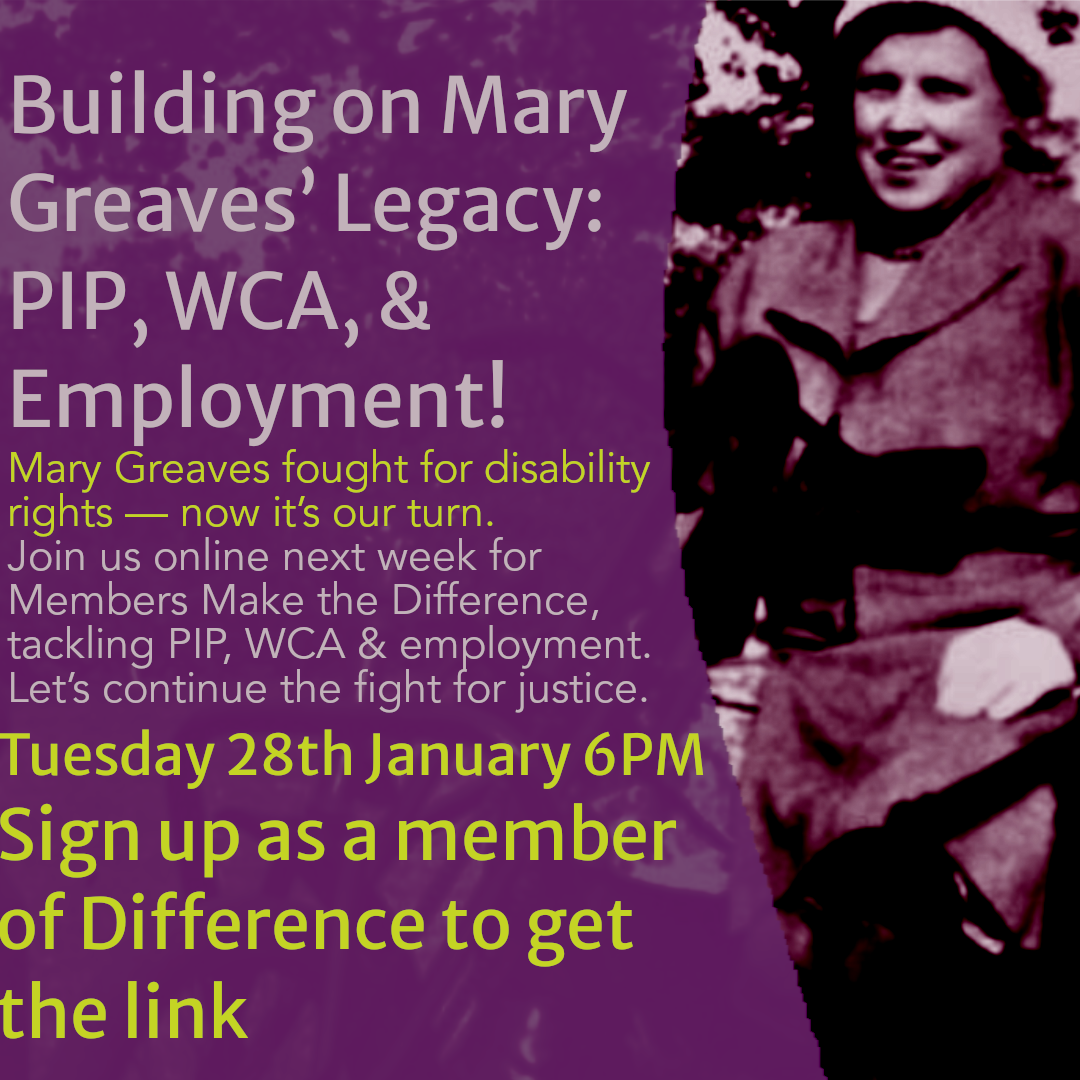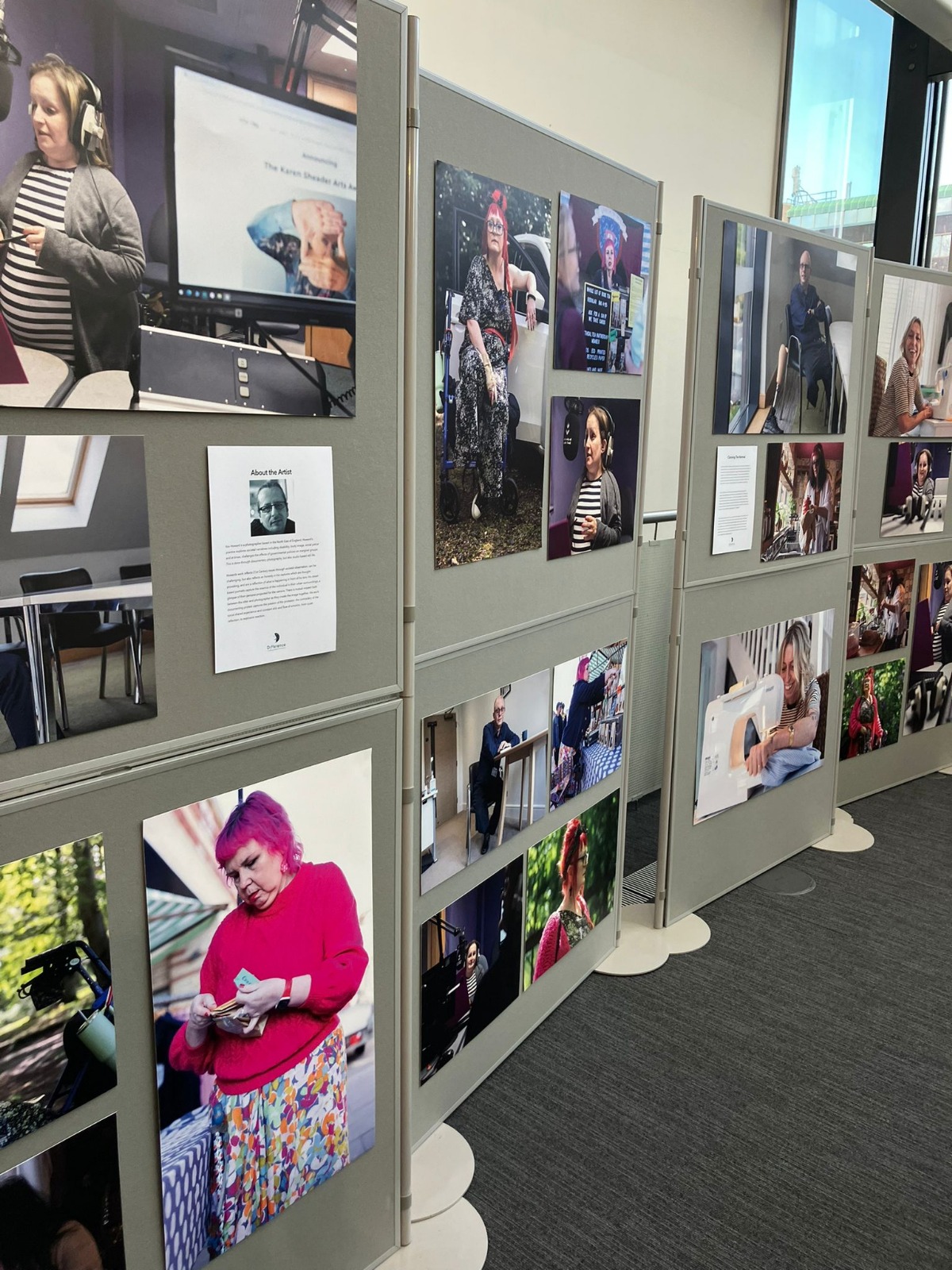
Mary Greaves was a pioneer of disability rights whose life and activism should continue to inspire and educate. Born in Whitley Bay in 1907, Mary’s journey from a childhood marked by polio to becoming a leader in shaping the social model of disability is nothing short of remarkable. Yet, the way we commemorate her today — with language that undermines her legacy — calls attention to the importance of inclusive representation. Let’s explore her story and what it teaches us about honouring disabled voices.
Mary’s Life and Legacy
Mary Greaves grew up in Whitley Bay, navigating a society steeped in prejudice against, and barriers to, disabled people. After contracting polio as a child, she faced widespread pity and low expectations from others. But Mary was determined to live a full, impactful life.
As an adult, she founded a secretarial school, became self-employed — a necessity for many disabled people due to barriers in traditional employment — and later joined the Civil Service. In London, she became a leader of the Disablement Income Group, helping secure the groundbreaking Chronically Sick and Disabled Persons Act of 1970, the first legislation to address disabled people’s financial and social welfare in the UK.
Mary’s activism didn’t stop there. She was part of the Union of the Physically Impaired Against Segregation (UPIAS), which laid the groundwork for the social model of disability. This model, which shifts the focus from individual impairments to societal barriers, has transformed countless lives.
The Blue Plaque Debate
Despite Mary’s monumental achievements, a blue plaque commemorating her at her childhood home in Whitley Bay uses language that perpetuates the very stereotypes she fought against. The plaque reads: “Severely disabled throughout her life as a result of childhood polio.”
This description frames Mary’s life through a medical model of disability, emphasizing her impairment rather than her resilience and contributions. Imagine if we described Sylivia Pankhurst as “severely constrained throughout her life as a result of being a woman.” Such language diminishes their legacies and reinforces negative perceptions of marginalized groups.
To honour Mary properly, we must adopt empowering language and include disabled voices in decision-making processes from the outset. Mary herself advocated for the principle of “nothing about us without us,” a lesson we must uphold.
Lessons from Mary’s Life.
Mary’s life teaches us that true change happens when we dismantle barriers, amplify disabled voices, and challenge societal prejudices.
We invite you to:
- Watch the full video embedded below to learn more about Mary’s incredible story.
- Join Difference North East to support our work in advancing disability rights.
- Attend our upcoming events, where we continue conversations like these and build a stronger community.
- Mary Greaves fought for disability rights — now it’s our turn. Join us online next week for Members Make the Difference, tackling PIP, WCA & employment. Let’s continue the fight for justice. January 28 @ 6:00 pm – 7:00 pm (join from 5.45pm for 15 mins of less formal discussion)
Let’s carry Mary’s legacy forward, ensuring that every disabled person has the opportunity to thrive. Together, we can make a difference.



